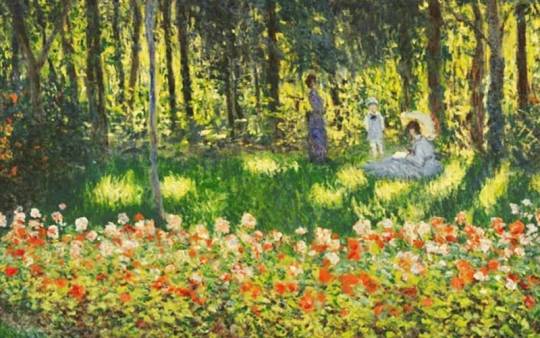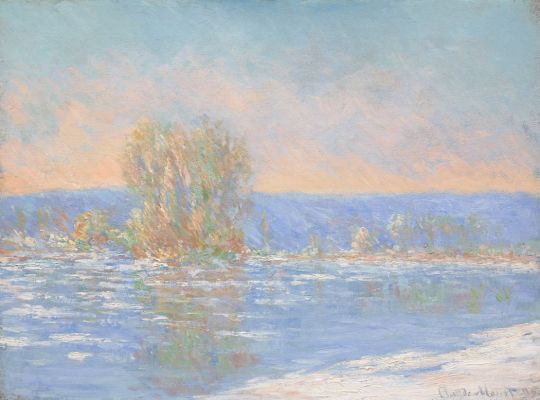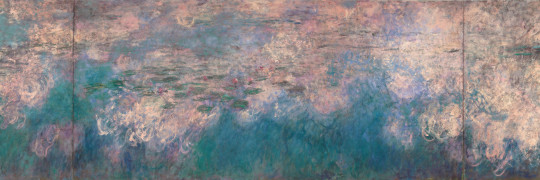#les demoiselles de giverny
Explore tagged Tumblr posts
Text






monet paintings i want to live inside
au jardin, la famille de l’artiste (1875) \\ chemin dans les bles a pourville (1882) \\ glaçons, environs de bennecourt \\ les demoiselles de giverny \\ meules (1890) \\ water lilies (1914-1926)
kofi
#monet#art#claude monet#chemin dans les bles a pourville#au jardin#les demoiselles de giverny#meules#water lilies#waterlilies
128 notes
·
View notes
Text
Sotheby's to auction five paintings by Claude Monet

Sotheby's to auction five paintings by Claude Monet Claude Monet at Sothebys March 2022Claude Monet - Les Demoiselles de Giverny - 1894 On March 2, Sotheby's will auction a group of five paintings by Claude Monet, coming from an American collection in London, with a combined pre-sale estimate of around £35 million ($50 million). Images: The group of five paintings to be offered at auction (image via Sotheby's) ·· Claude Monet, "Les Demoiselles de Giverny", 1894. The work with the highest pre-sale estimate (between £15 million and £20 million) is "Les Demoiselles de Giverny" (1894), and this is probably due to the presence of haystacks in the painting, although the work is not part of the celebrated series of "Meules" (Haystacks) painted between 1890 and 1891, and of which one example was sold by Sotheby's for $110.7 million in 2019. Far from the boldness and appeal of those works, "Les Demoiselles de Giverny" was auctioned 10 years ago at Christie's for $9.6 million. The auction includes two more landscapes by Monet. "Glaçons, environs de Bennecourt" (painted in the winter of 1892-93, and estimated at £5-7 million) is a typical scene of the frozen Seine that, according to Sotheby's, "shows Monet's progression towards his 20th century water lily paintings". "Sur la falaise près de Dieppe, soleil couchant" is an interesting and somewhat schematic view of the Norman coast, in which Monet, Sotheby's rightly notes, recaptures the colour palette he had used in his views of the Mediterranean coasts. Now carrying an estimate of between £3.5 and £5 million, the painting was auctioned in 2004 for $847,500. After "Les Demoiselles de Giverny", the work wih the highest presale estimate (£10-15 million) is "Massif de chrysanthèmes", painted in 1897. Bright and vivid in contrast to the subdued tones of "Les Demoiselles", the painting is one of the best still lifes by Monet, a painter who, moreover, never devoted much effort to the still life genre. The work was auctioned for $2.35 million at Christie's in May 2004. Another small still life by the artist, "Prunes et Abricots", painted around 1882-85, is the smallest work in the group, and the one with the most modest presale estimate (£1.2 million and £1.8 million). Read the full article
0 notes
Photo










MONET SAUVÉ DES EAUX: LES NYMPHÉAS
Claude Monet dedicated himself to the depiction of his water lily pond at Giverny for the last 20 years of his life, producing over 250 paintings of the subject by 1926. Durand-Ruel’s exhibited 48 of the early works from the series in 1909, garnering universal acclaim for their creator. The critic for Le Siècle observed that “Monet has reached the final degree of abstraction and imagination allied to the real that his art of the landscapist allows.”
There is no doubt that, as he did with the haystack series, Monet is testing the tolerances of a certain type of descriptive landscape painting. What constitutes “the real” in the Nymphéas is, however much less clear. Nature, romantically-construed, is not being contemplated in the series: Monet designed (and his gardeners constructed) the bassin aux nymphéas on a vacant lot adjacent to the Giverny property to serve as a subject of representation. Taking over five years to construct, plant and mature, the water garden itself is a self-consciously-conceived work of art, summoned into being by the needs of another, superior artform. The “real” adhered to by Monet is not the natural world; it is the material prototype that acts as a model for the final act of representation.
The creation of the Nymphéas mobilized and thematized the artist’s powers of observation and visual perception. The perception of the works by other viewers clearly preoccupied Monet as well, as seen by his careful and, at times oppressive, management of their experience. S/he was definitely not permitted to observe politely from the banks. Early in the series, Monet eradicates the few, vestigial traces of depicted land seen the his first images of the lily pond, or any other grounded point of view, plunging the viewer into a murky, drowned world of ever-changing effects with no points de repères.
This full immersion strategy is enhanced by the mural scale of the paintings, which often exceeds actual scale, and by the bending of canvases to create 360 degree panoramic effects. In the lower room of the Orangérie, specially-constructed under Monet’s supervision for the viewing of the vast, magisterial ensemble of Nymphéas donated to the nation in 1926, it requires effort on the viewer’s part to keep his or her head above water.

Well into his 60s, Monet successfully recast not just landscape painting, but painting itself, by radically rejecting the old compositional hierarchies of center and periphery in favor of the even dispersion of visual interest across the painted surfaces of the Nymphéas. More importantly, Monet’s stature, cemented by the triumphant reception of the series, secured the future of the aesthetic of the informe beyond Impressionism. For these reasons, the influence of the Nymphéas on 20th-century art was at least as great as that of Olympia or the Demoiselles d’Avignon.
#claude monet#impressionism#french painting - 19thc.#informe#nymphéas#orangérie#giverny#vétheuil#haystacks#durand ruel
6 notes
·
View notes